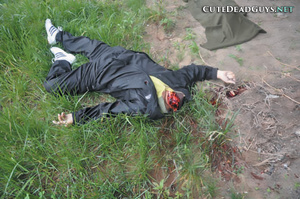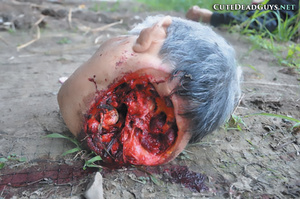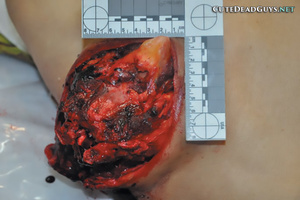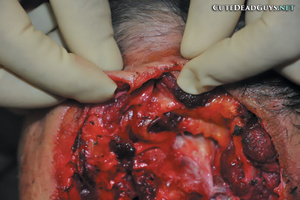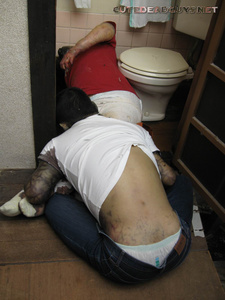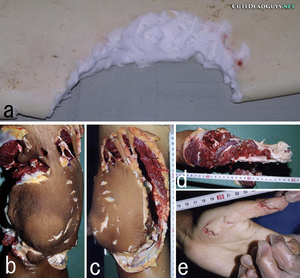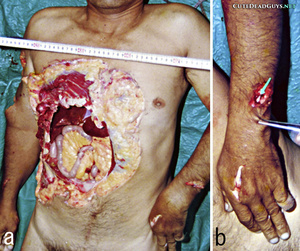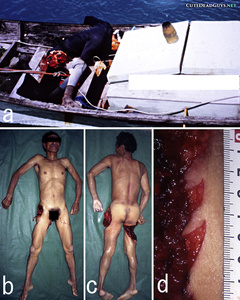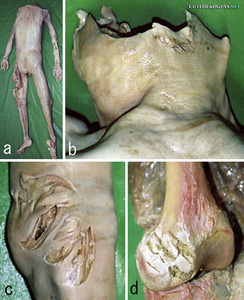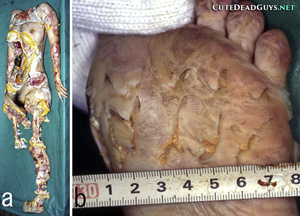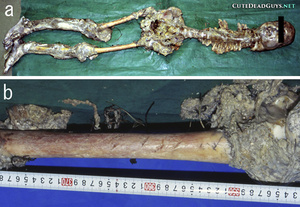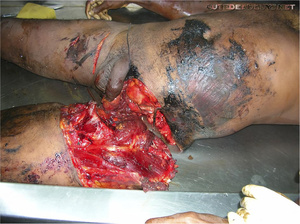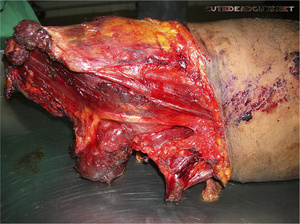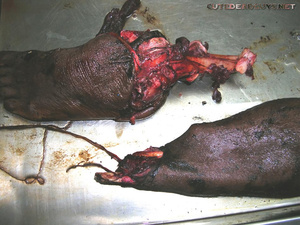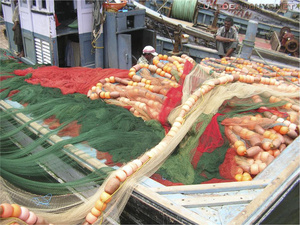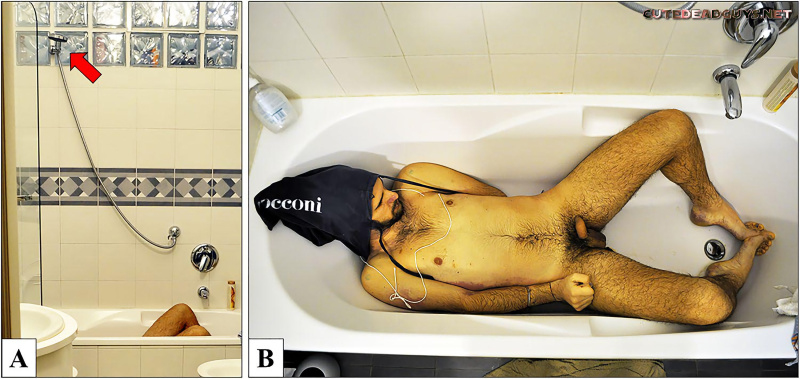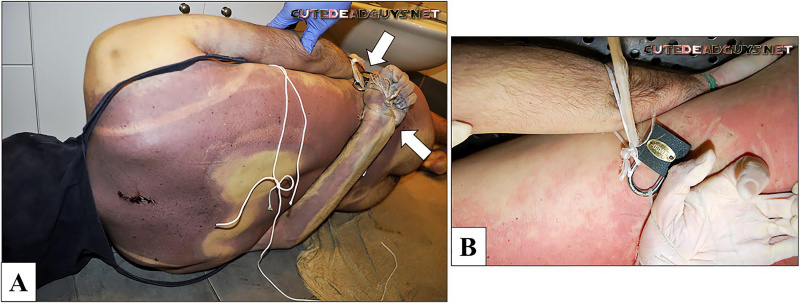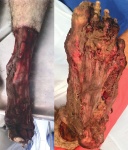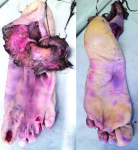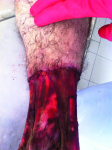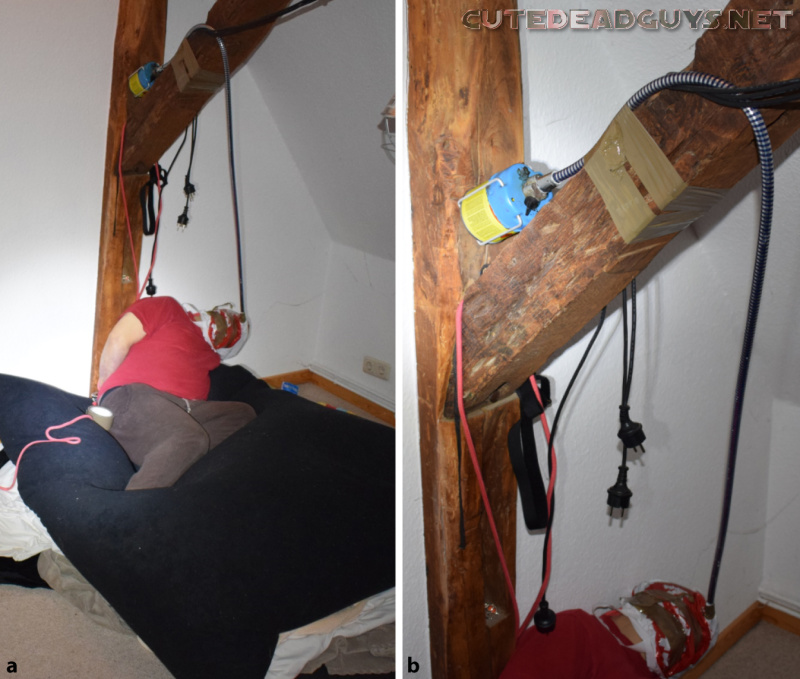- Joined
- Oct 7, 2008
- Messages
- 62,122
- Location
- Bulgaria
Suicide by Small Model Cannon

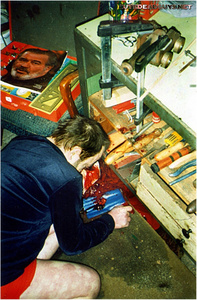

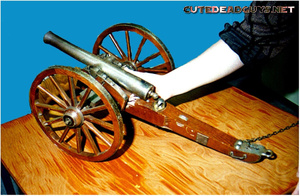
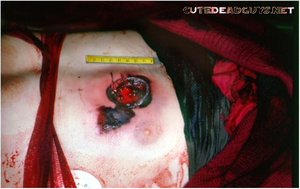
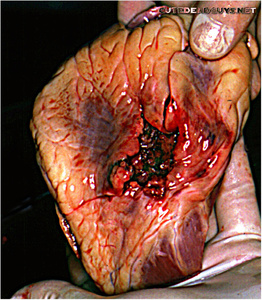
Germany. A 39-year-old metalworker was found dead in his workroom. He had manipulated a model cannon with jackscrews on his workbench. Nearby, banger fuses, remains of black gunpowder, a wooden stick used for stuffing, and a lighter were found. The man had already owned this cannon for years. Chronic problems of alcoholism and a current difficult personal relationship were identified as motives for his unexpected suicide.
A small, self-built model cannon with a caliber of approximately 10 mm and a barrel length of 18 cm was used. It had been stuffed with powder taken from fireworks, a ball from a ball-bearing, and a stopper. A banger fuse served as slow-match ignition.
Autopsy disclosed a rounded, punched-out entry wound approximately in the middle of the forehead with a diameter of 10mm within skin and bone, which was caliber-sized and accompanied by multiple star-shaped tears of the skin. Throughout the surrounding area of skin, bone, and brain, massive blast and powder damage (mainly black zone) were detected. A sagittal coursing shot channel was found leading through the left frontal, the parietal, and occipital lobe with an exit wound in the occipital area slightly left of the midline. The bullet induced a burst of the skull. There were blast and powder traces found on the right hand. The blood alcohol concentration was determined at 2.19‰, the urine alcohol concentration was 2.55‰. The cause of death was an immediate collapse of the life-sustaining central nervous functions due to severe pronounced brain damage caused by a shot from the model cannon through the skull.
Model cannons are usually considered to be harmless toys; therefore no legal regulations are required. Nevertheless, suicidal intentions or playful experimentation can turn this toy into a lethal weapon. Cases of lethal injuries attributable to model cannons are extremely rare



